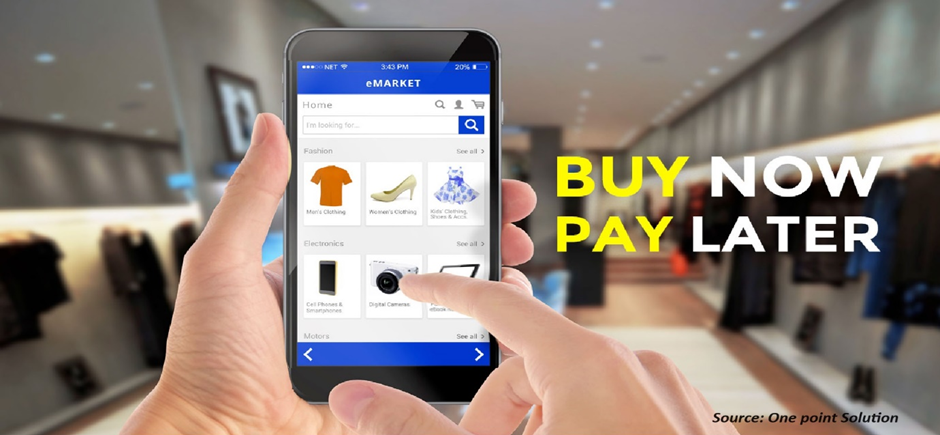
Latin America Mobile Payment Market by Age (Generation Z, Millennials, Generation X, and Baby Boomers), by Payment Type (Proximity and Remote), and by Application (Money Transfers, Merchandise Purchases, Bill Payments, Airtime Top-ups, Ticketing, and Others) – Opportunity Analysis and Industry Forecast, 2024–2030
Industry: ICT & Media | Publish Date: 01-Sep-2024 | No of Pages: 111 | No. of Tables: 79 | No. of Figures: 44 | Format: PDF | Report Code : IC2489
Latin America Mobile Payment Market Overview
The Latin America Mobile Payment Market size was valued at USD 5.61 billion in 2023, and is predicted to reach USD 20.98 billion by 2030, with a CAGR of 19.6% from 2024 to 2030. The mobile payment system, also termed as money transfer, mobile money, m-payments, electronic payments, and digital payments, facilitates financial transactions via mobile gadgets such as smartphones, tablets, and wearables. These transactions occur through mobile apps or various methods such as proximity and remote transactions. Mobile payment systems comprise various types such as mobile wallets, mobile banking apps, and online payment services such as PayPal, Venmo, and Google Pay.
Employing technologies such as SMS, near-field communication (NFC), quick response (QR) codes, and others, these systems ensure seamless transactions while implementing robust security measures such as encryption and biometric authentication to safeguard personal and financial data. Admired for their convenience, speed, security, and integration with other financial tools, mobile payment systems witness broad acceptance. Additionally, users can configure payment apps to automatically settle bills, such as utility or credit card bills, ensuring efficient financial management and avoiding late payments.
Ease of Use in Mobile Payment Services Drives the Latin America Mobile Payment Market Growth
The mobile payment industry relies heavily on ease of use to make platforms more accessible and user-friendly. Simplified interfaces, quick transactions, and strong security features foster trust, promoting widespread adoption among consumers and merchants. Clear support and educational initiatives enhance user confidence, ensuring a positive experience and driving sustained market growth.
High Adoption of Smartphones Propels the Latin America Mobile Payment Market Demand
The widespread adoption of smartphones and the increasing penetration of the internet serve as fundamental catalysts propelling the Latin America mobile payment market demand. As smartphones become increasingly prevalent and internet connectivity expands globally, a vast majority of consumers now possess the essential tools required for mobile payments. Smartphones act as convenient and portable payment hubs, empowering users to conduct transactions at their convenience, regardless of location.
Concurrently, the expanding reach of the internet ensures seamless connectivity, facilitating secure and instantaneous payment processing. With a rising number of consumers embracing smartphones and gaining access to dependable internet services, the potential user base for mobile payments experiences a significant surge.
This trend not only enhances convenience and accessibility for consumers but also encourages merchants to embrace mobile payment solutions to accommodate evolving consumer preferences, thereby propelling the overall expansion of the mobile payment market.
Risks Related to Data Breaches and Security Concerns Hamper the Latin America Market Growth
The Latin America mobile payment market growth faces significant challenges due to risks associated with data breaches and security concerns in the country. As reliance on mobile devices for financial transactions grows, the potential for unauthorized access, data breaches, and identity theft has become a major worry for consumers and businesses as such.
Instances of high-profile security breaches can undermine trust in mobile payment platforms, causing users to hesitate in adopting or continuing to use mobile payment services. Moreover, regulatory bodies impose strict requirements for data protection and cybersecurity, which increase the complexity and costs associated with mobile payment operations. Addressing these security concerns necessitates robust encryption, multi-factor authentication, and proactive security measures to instill confidence in mobile payment solutions and drive market growth.
The Emergence of Real-Time Payment Creates Opportunities in the Latin America Mobile Payment Market
Real-time payments have emerged as a game-changer in the Latin America mobile payment market, presenting significant opportunities for growth and innovation in the country. These systems facilitate instantaneous fund transfers between parties, offering unprecedented speed, convenience, and efficiency.
This breakthrough opens up a plethora of use cases for mobile payment providers, allowing them to deliver seamless and frictionless payment experiences to both consumers and businesses. With real-time payments, transactions can be settled instantly, whether it's splitting bills with friends, making retail purchases, or transferring funds between accounts.
Moreover, the integration of real-time payment capabilities into various industries, such as e-commerce, peer-to-peer lending, and on-demand services, fosters innovation and expands the mobile wallet ecosystem. Overall, the emergence of real-time payments revolutionizes payment processing and creates fertile ground for growth and innovation in the Latin America mobile payment market.
Competitive Landscape
Various market players operating in the Latin America mobile payment industry include Alphabet, Inc. (Google), Alibaba Group Holdings Limited, Amazon.com, Inc., Apple, Inc., PayPal Holdings, Inc., Visa, Inc., Tencent Holdings Limited (WeChat), MasterCard International, Inc., Samsung Electronics Co. Ltd., Block, Inc., and others. These key players have adopted various strategies to strengthen their share in the Latin America mobile payment sector.
Latin America Mobile Payment Market Key Segments
By Age
-
Generation Z
-
Millennials
-
Generation X
-
Baby Boomers
By Payment Type
-
Proximity
-
Near-Field Communication (NFC)
-
Quick Response (QR) Code Payments
-
-
Remote
-
Internet Payments
-
SMS/Direct Carrier Billing
-
By Application
-
Money Transfers
-
Merchandise Purchases
-
Bill Payments
-
Airtime Top-ups
-
Ticketing
-
Others
REPORT SCOPE AND SEGMENTATION:
|
Parameters |
Details |
|
Market Size in 2023 |
USD 5.61 Billion |
|
Revenue Forecast in 2030 |
USD 20.98 Billion |
|
Growth Rate |
CAGR of 19.6% from 2024 to 2030 |
|
Analysis Period |
2023–2030 |
|
Base Year Considered |
2023 |
|
Forecast Period |
2024–2030 |
|
Market Size Estimation |
Billion (USD) |
|
Growth Factors |
|
|
Companies Profiled |
10 |
|
Market Share |
Available for 10 companies |
|
Customization Scope |
Free customization (equivalent up to 80 working hours of analysts) after purchase. Addition or alteration to country, regional, and segment scope. |
|
Pricing and Purchase Options |
Avail customized purchase options to meet your exact research needs. |
KEY PLAYERS
-
Alphabet, Inc. (Google)
-
Alibaba Group Holdings Limited
-
Amazon.com, Inc.
-
Apple, Inc.
-
PayPal Holdings, Inc.
-
Visa, Inc.
-
Tencent Holdings Limited (WeChat)
-
MasterCard International, Inc.
-
Samsung Electronics Co. Ltd.
-
Block, Inc.




 Speak to Our Analyst
Speak to Our Analyst

































